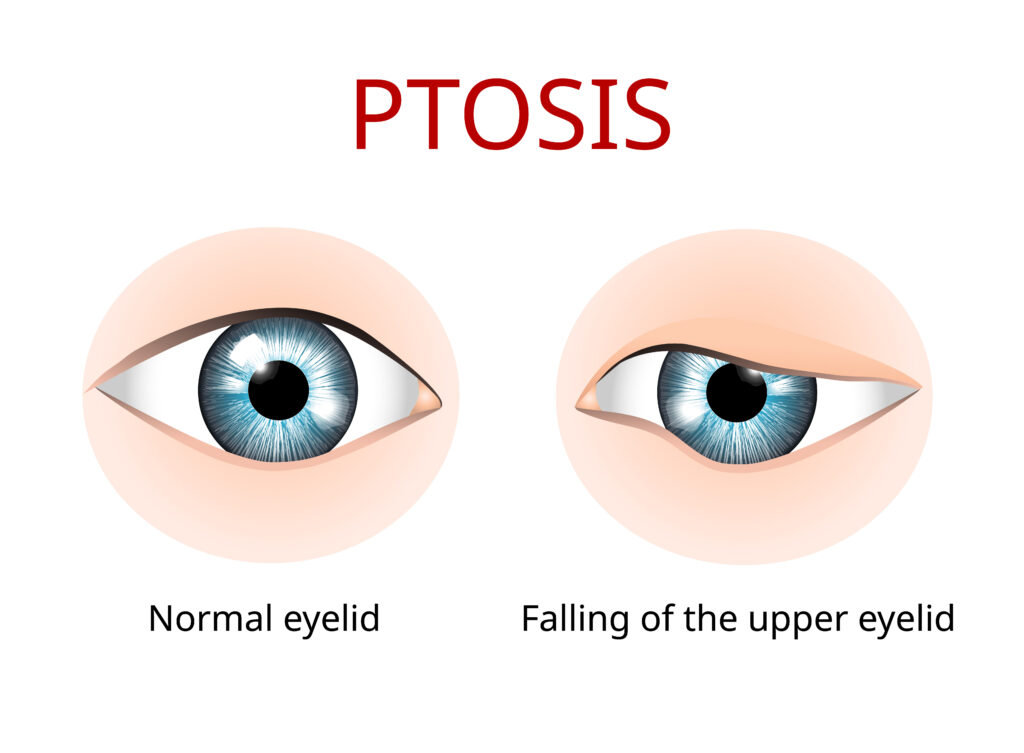What is ptosis surgery?
Ptosis surgery is surgical repair for upper eyelid ptosis, or a drooping upper eyelid. This is often performed to improve the superior visual field and may additionally improve cosmetic appearance.

How is ptosis surgery performed?
Ptosis surgery can be performed using an “external” or “internal” approach. In the internal approach, all incisions are made underneath the eyelid, allowing for a scar-free surgery. This approach can allow for a faster recovery, but does not always work for greater degrees of ptosis. In the external approach, an incision is made in the upper eyelid crease. This method is typically necessary for greater degrees of ptosis. Your surgeon will determine which approach is best at your consultation.
The Eye Centers offer consultations at our Avon, Lakewood, Fairview Park, and Middleburg Heights locations.
What are the risks?
Dry eye
Most commonly, patients may experience increased dry eye following the procedure. For this reason, it is important to optimize the surface of the eye and treat any underlying dry eye. For more information about our dry eye clinic, click here.
Scarring
The incision for an external ptosis surgery is in the eyelid crease and for this reason most people are not bothered by the scar. Everyone heals differently and the scar process may take up to a year to fully complete. Keeping the incision well moisturized and out of direct sunlight can help reduce the appearance of the scar.
Swelling and Bruising
You may expect up to 2 weeks of swelling and bruising around the upper and lower eyelids. More mild swelling can be seen up to 2 months following the procedure. Avoiding medication and supplements that increase bleeding can help with bruising if approved by your doctor.
Symmetry
There are many factors that result in asymmetric features, many of which are caused by the bone structure of the face. Although symmetry may be improved with ptosis surgery, many people have eyes that aren’t perfectly aligned or that appear to be different sizes. Asymmetrical features occur during the early stages of development. Ptosis surgery won’t alter your facial structure. It’s important to know your face well before you decide to have surgery. Think carefully about your expectations and discuss them with your surgeon.


